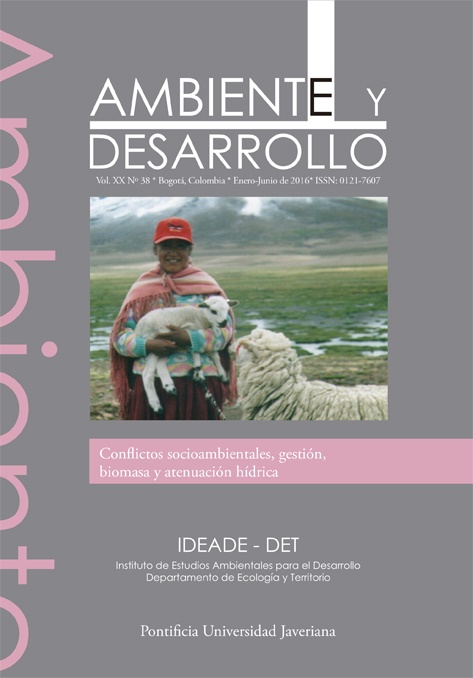Abstract
El cambio climático cada día cobra mayor importancia y nuevas especies vegetales surgen como opciones para mitigar este problema mundial. El objetivo de la investigación fue estimar la biomasa acumulada y el carbono en biomasa vegetal y en el suelo en rodales artificiales de Dendrocalamus latiflorus, Guadua agustifolia, Guadua aculeata y desarrollar modelos matemáticos para estimar la biomasa y/o carbono. La biomasa se estimó por el método destructivo. La fracción de carbono promedio osciló de 43,2 % a 47,2 % entre los diferentes componentes en un mismo eje y de 36,4 % a 46,7 % en los demás componentes de la biomasa vegetal del ecosistema. El porcentaje de carbono en el suelo fue de 2,45 %. El carbono almacenado (incluido el suelo) por hectárea en plantaciones de D. latiflorus fue de 186,73 Mg ha-1 y de 117,74 Mg ha-1 en G. angustifolia y G. aculeata. Los culmos representan más del 87 % del carbono de la biomasa total y más de 34 % a nivel de ecosistema. Los modelos ensayados por componente del culmo y para el eje completo no presentaron buenos ajustes y se desestimaron, mientras que los modelos agregados poseen R2 superiores al 89 % y bajos errores de estimación.
Palabras clave: cambio climático, fracción de carbono, guadua, modelos de regresión.
Ambiente y Desarrollo is registered under a Creative Commons Attribution 4.0 International Public License. Thus, this work may be reproduced, distributed, and publicly shared in digital format, as long as the names of the authors and Pontificia Universidad Javeriana are acknowledged. Others are allowed to quote, adapt, transform, auto-archive, republish, and create based on this material, for any purpose (even commercial ones), provided the authorship is duly acknowledged, a link to the original work is provided, and it is specified if changes have been made. Pontificia Universidad Javeriana does not hold the rights of published works and the authors are solely responsible for the contents of their works; they keep the moral, intellectual, privacy, and publicity rights.
Approving the intervention of the work (review, copy-editing, translation, layout) and the following outreach, are granted through an use license and not through an assignment of rights. This means the journal and Pontificia Universidad Javeriana cannot be held responsible for any ethical malpractice by the authors. As a consequence of the protection granted by the use license, the journal is not required to publish recantations or modify information already published, unless the errata stems from the editorial management process. Publishing contents in this journal does not generate royalties for contributors.


